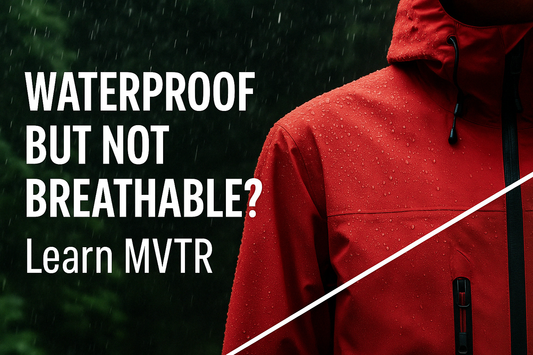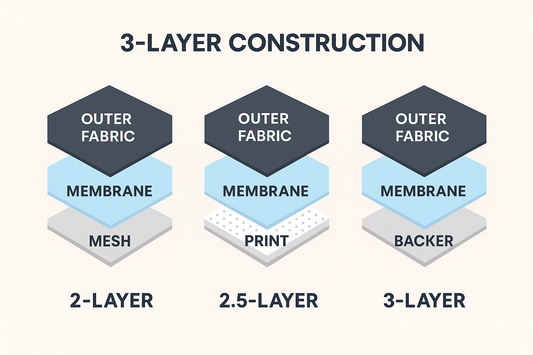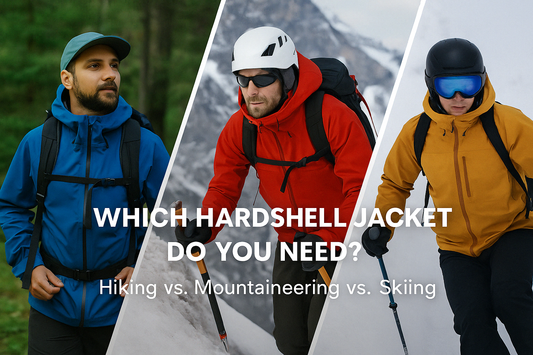
Down Jacket vs Puffer Jacket: Which One’s Right for You?
Share
As winter sets in, you’ll likely find yourself torn between a down jacket and a puffer jacket. Both promise warmth, but the way they deliver it is different.
In this post, we’ll break down what makes each jacket unique, from insulation and weather resistance to style and performance. Whether you’re after something sleek for city life or durable for the great outdoors, we’ve got you covered — and we’ll also introduce you to a high-tech puffer jacket that might just change the way you think about winter wear.
What is a Down Jacket?
A down jacket is an outerwear piece filled with natural down feathers, typically from ducks or geese.
These feathers trap heat in small air pockets, providing excellent insulation. Known for their lightness and superior warmth-to-weight ratio, down jackets are a top choice for cold, dry climates.
Down Jacket Pros and Cons
Pros:
-
Lightweight and Warm: The main benefit of a down jacket is its incredible warmth without the bulk. Down offers excellent insulation, making it ideal for cold weather.
-
Compressible and Packable: Down jackets can be packed into small sizes, making them convenient for travel or outdoor activities where space is limited.
-
Breathable: Down allows for good air circulation, preventing you from overheating during active use.
Cons:
-
Not Ideal in Wet Conditions: When down gets wet, it loses its insulating ability and can take a long time to dry.
-
Higher Price Point: Premium down jackets can be expensive, especially those with high fill power.
- Ethical Considerations: Some consumers prefer to avoid down due to concerns about sourcing practices, although certifications like the Responsible Down Standard (RDS) address these issues.
Best Environments for Down Jackets
Down jackets excel in cold, dry conditions, such as mountain hikes or city winters with little rain or snow. If you're in a climate with frequent wet weather, you might want to pair a down jacket with a weatherproof outer layer or consider an alternative like a synthetic puffer jacket. Down is perfect for anyone seeking a warm, lightweight jacket that can easily be packed away for travel or outdoor adventures in the cold.

What is a Puffer Jacket?
A puffer jacket, also known as a quilted jacket, is typically filled with synthetic insulation like polyester or nylon, although some versions use down. The filling is arranged in “puffs” or “baffles,” which gives the jacket its signature puffy look.
High-tech options like the Alpargali Aerogel Graphene Puffer Jacket take it further, combining aerogel and graphene for an exceptional weight-to-warmth ratio, perfect for both extreme cold and mild weather.
Puffer Jacket Pros and Cons
Pros:
-
Affordable & Durable: Synthetic insulation is cost-effective and long-lasting.
-
Better in Wet Conditions: Retains warmth even when damp.
-
Low Maintenance: Easy to care for, often machine-washable.
Cons:
-
Bulkier: Heavier and less compressible than down jackets.
-
Less Breathable: Can cause overheating during intense activity.
-
Less Sleek: May not have the streamlined look of down jackets.
Best Environments for Puffer Jackets
Puffer jackets are ideal for wet, cold climates, excelling in rain, snow, or unpredictable weather. Whether you're hiking, skiing, or braving city storms, puffer jackets provide reliable warmth without losing insulation when wet.
Down Jacket vs Puffer Jacket: 5 Key Differences
1. Material and Insulation
Down Jackets: Down jackets use natural down feathers, known for their lightweight and efficient heat retention. They excel in dry, cold climates, trapping warmth in air pockets created by the feathers. However, down loses its insulating ability when wet, making it less ideal for rainy or snowy conditions unless treated with water-resistant coatings.
Puffer Jackets:
- Puffer jackets typically use synthetic insulation like polyester or nylon, which provides warmth similar to down but performs better in wet conditions. They're durable and affordable, but also bulkier than down.
- The Alpargali Aerogel Graphene Puffer Jacket solves this problem. By combining aerogel and graphene, it delivers lightweight warmth that maintains excellent performance in extremely cold and wet conditions without adding bulk.
Are Down Jackets Warmer Than Puffer Jackets?
Generally, down jackets are warmer in dry, cold conditions due to the superior insulation properties of down. However, puffer jackets with advanced materials, like the Alpargali Aerogel Graphene Puffer Jacket, can offer high warmth retention even in wet weather.
What Temperature to Wear a Puffer Jacket?
Puffer jackets work best in temperatures from 0°C to -10°C (32°F to 14°F). Advanced models like the Alpargali Aerogel Graphene Puffer Jacket can handle even colder temperatures while offering great performance in snow and rain, thanks to their superior insulation.
What Temperature is a Down Jacket Good For?
Down jackets are perfect for -5°C to -20°C (23°F to -4°F) in dry weather, where their insulation properties shine. However, they may lose warmth in wet conditions unless treated to be more water-resistant.
2. Water Resistance
Down Jackets: Traditional down jackets generally have low water resistance. Down insulation is highly sensitive to moisture, and even if the outer shell is water-resistant, the down filling will absorb water, losing its warmth. Therefore, down jackets are best suited for dry, cold climates. In wet or rainy conditions, a down jacket may not perform as effectively.
Puffer Jackets:
- Puffer jackets typically use synthetic insulation (like polyester or nylon), which is more water-resistant than down. Synthetic materials maintain warmth even when wet, and many puffer jackets come with water-resistant or waterproof outer shells. These features ensure that you stay dry and warm, even in snowy or rainy weather.
- Our Alpargali Aerogel Graphene Puffer Jacket takes water resistance a step further with its Teflon™-coated exterior, offering 10K waterproof performance. This ensures that you stay dry and warm, even in extreme weather conditions, like snow or rain.
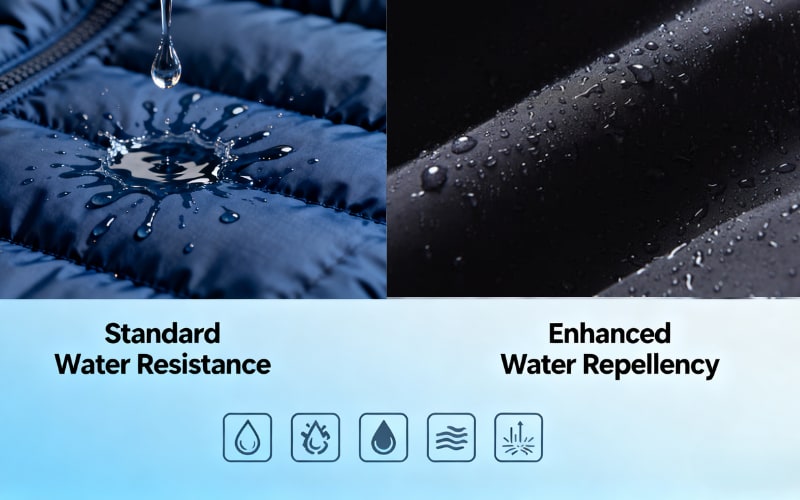
3. Volume and Portability
Down Jackets: Down jackets are known for their lightweight nature and excellent compressibility. Thanks to the fluffy, air-trapping down insulation, these jackets can be packed down into small sizes, making them ideal for travel. Their low weight and compact nature mean you can easily stash them in a backpack or suitcase, even for extended trips.
Puffer Jackets:
- Puffer jackets, especially those filled with synthetic insulation, are often bulkier and less compressible than down jackets. The synthetic fill tends to be denser, which increases the jacket's overall weight and makes it harder to pack down. However, modern innovations in insulation materials have led to some lightweight puffer options.
- For example, our Alpargali Aerogel Graphene Puffer Jacket combines aerogel and graphene technology to create a jacket that is incredibly light and easy to pack. With a weight of just 1000g, it offers the warmth of a down jacket without the bulk, making it perfect for travelers who need warmth and portability in one.
4. Durability and Maintenance
Down Jackets: Down jackets require careful care to prevent clumping and loss of insulation. Proper cleaning involves cold water and low-heat drying with dryer balls. If not maintained well, down jackets can lose their effectiveness over time.
Puffer Jackets: Puffer jackets with synthetic insulation are more durable and easier to maintain. They can usually be machine washed and are resistant to wear and tear. Their durability makes them ideal for daily use and more rugged conditions.
5. Appearance and Design
Down Jackets: Down jackets typically feature a more refined, streamlined look. They are designed to balance fashion with practicality, making them a great choice for urban environments where style matters as much as warmth. Their sleek silhouette works well in both casual and formal settings.
Puffer Jackets:
- Puffer jackets are known for their bulkier, more “puffy” appearance, giving them a sporty, casual vibe. They are often preferred for outdoor activities or more laid-back, weekend looks. While they are functional, their design might not always align with urban fashion trends.
- However, our Alpargali Aerogel Graphene Puffer Jacket stands apart. With its sleek, modern design, it provides the warmth and performance of a puffer jacket, yet retains a refined, fashionable look. It’s not bulky or oversized, offering a more tailored fit that’s just as stylish as a down jacket, making it a versatile option for both urban and outdoor settings.
Choosing Between a Down Jacket and a Puffer Jacket
With all the differences between down jackets and puffer jackets, choosing the right one can feel overwhelming. It ultimately depends on what you prioritize most—whether it's warmth, durability, weight, or the specific conditions you'll be facing. Let’s break it down:
When to Wear a Down Jacket
-
Cold, Dry Environments: Down jackets are ideal for extremely cold, dry conditions. The insulating properties of down make it excellent at trapping warm air, providing lightweight warmth in frigid temperatures, especially in dry climates.
-
Lightweight Travel: Due to their compressibility and lightness, down jackets are perfect for travel. They are easy to pack down into small spaces, making them the go-to option for hiking, climbing, or any other outdoor activity where space and weight are critical.
-
Daily Urban Wear: Down jackets are often designed to be sleek and stylish, making them great for both warmth and fashion. If you want a jacket that keeps you warm in the city but still looks sharp, a down jacket is a solid choice.
-
Layering: If you need extra warmth, down jackets are also excellent as mid-layers. Their light and compressible nature allow them to be worn comfortably under a shell or coat, providing warmth without the bulk.
When to Wear a Puffer Jacket
-
Wet or Damp Conditions: Puffer jackets, filled with synthetic insulation, perform better than down jackets in wet environments. Synthetic fibers, like polyester or nylon, retain warmth even when damp, making them the ideal choice for rainy or snowy conditions.
-
Extreme Outdoor Activities: Puffer jackets tend to be more durable and are better suited for outdoor activities like skiing, hiking, and mountaineering. Their robust construction can handle rough conditions and exposure to the elements, ensuring you stay warm and protected.
-
Daily Use and Commuting: Puffer jackets are generally more affordable, durable, and easier to care for than down jackets. If you need something for everyday wear or commuting in chilly weather, a puffer jacket is an excellent option. It’s functional, easy to maintain, and provides warmth without too much fuss.
-
Versatility: Many puffer jackets come with multiple functional features like adjustable hoods, cuffs, and extra pockets, making them a versatile option for various weather conditions and activities. They are suitable for both casual wear and active outdoor use.
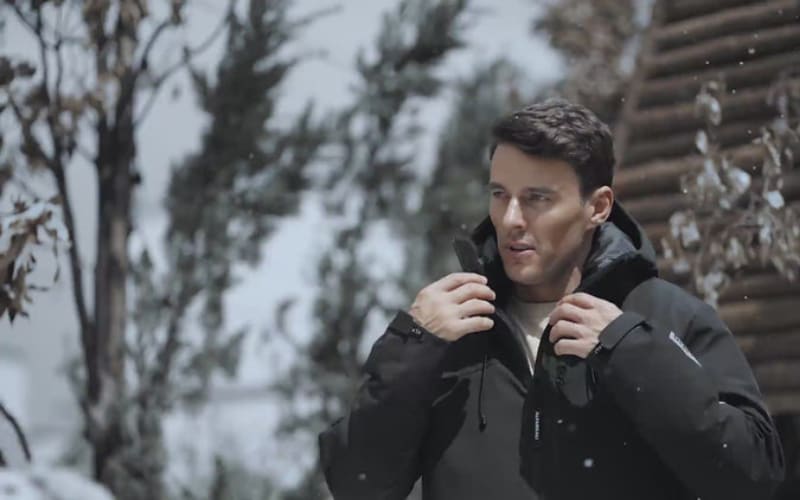
When to Wear the Alpargali Aerogel Graphene Puffer Jacket
-
Extreme Cold: The Alpargali Aerogel Graphene Puffer Jacket is designed for extreme cold conditions, effective in temperatures as low as -40°C/-40°F. Its advanced aerogel and graphene technology provides ultra-lightweight warmth and blocks out cold, making it perfect for harsh winter environments.
-
Wet and Unpredictable Weather: Thanks to its 10K waterproof rating, the Alpargali Puffer can handle wet, snowy, or rainy conditions without losing its insulating properties. If you live in a place with unpredictable weather, this jacket will keep you warm and dry no matter the forecast.
-
Urban Life and Outdoor Adventures: This jacket is not just for extreme weather—it’s also great for city life. Its sleek design and advanced functionality make it equally well-suited for urban commuting and outdoor adventures. Whether you’re heading to the office or out for a weekend hike, this jacket has you covered.
-
All-Day Comfort: With adjustable features like the hood and cuffs, plus built-in ventilation, the Alpargali Puffer ensures comfort throughout your day, whether you’re in the city or out in the wild. It keeps you warm without overheating, making it perfect for both active use and casual wear.
- Fashion and Function Combined: Unlike traditional puffer jackets, which can be bulky and less stylish, the Alpargali Aerogel Graphene Puffer offers a sleek, modern design that doesn’t sacrifice function for style. It’s the perfect choice for those looking for both high performance and a fashionable appearance. Whether for outdoor adventures or urban living, this jacket adapts to your needs.
Down Jacket vs Puffer Jacket vs Padded Jacket
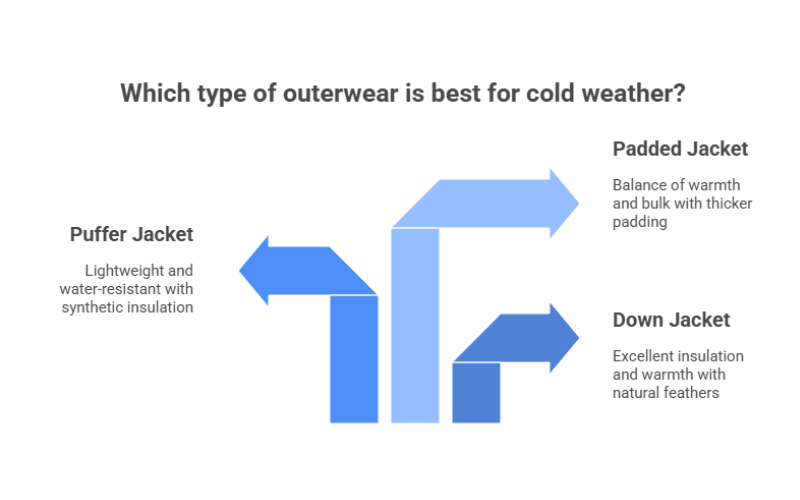
Down jackets, puffer jackets, and padded jackets serve similar purposes, but each jacket has unique features that can suit different needs and preferences. Here's a comparison at a glance.
|
Feature |
Down Jacket |
Puffer Jacket |
Padded Jacket |
|
Insulation |
Natural down (duck or goose feathers) |
Synthetic (e.g., polyester, nylon) |
Mix of synthetic and/or down |
|
Warmth |
Superior warmth-to-weight ratio |
Retains warmth in wet conditions |
Moderate warmth, less bulky than puffer |
|
Performance in Wet Conditions |
Loses warmth when wet |
Performs well in rain and snow |
Moderate moisture resistance |
|
Packability |
Lightweight, compressible |
Bulkier but still packable |
Moderate packability |
|
Best For |
Dry, cold weather |
Wet or snowy weather |
Milder cold, everyday wear |
|
Durability |
Requires careful care |
More durable and easy to clean |
Durable and easy to maintain |
|
Style |
Sleek, streamlined |
Bulkier, sportier look |
More casual, less fitted than down |
Quick Takeaway:
-
Down Jackets are perfect for dry cold climates and offer the best warmth-to-weight ratio.
-
Puffer Jackets excel in wet conditions and are more durable.
- Padded Jackets are great for mild weather or as a layering option.
When it comes to choosing an insulation jacket, it’s all about balancing warmth, weight, and functionality for your specific needs. Down jackets offer superior warmth-to-weight ratios, ideal for dry, cold climates, while puffer jackets are often better suited for wet or unpredictable weather thanks to their synthetic insulation.
Still undecided? Our Clothing Comparison page provides an in-depth look at how these jackets stack up, helping you make a more informed decision based on your lifestyle and climate needs.
FAQ About Down Jacket vs Puffer Jacket
Can I use a puffer jacket in snow?
Yes, you can wear a puffer jacket in the snow. Puffer jackets with synthetic insulation, like the Alpargali Puffer Pro, are designed to perform well in snow and wet conditions. With its advanced materials like aerogel and graphene, our jacket retains warmth even when damp, making it a reliable option for snowy weather.
Are puffer jackets for fall or winter?
Puffer jackets are versatile and suitable for both fall and winter. The Alpargali Aerogel Graphene Puffer Jacket, for instance, is effective in temperatures ranging from -40°C/-40°F to +10°C/50°F, making it perfect for both crisp autumn days and cold winter conditions. For fall, lighter versions work great, while thicker options like ours are ideal for winter.
Are parkas warmer than puffer jackets?
Parkas are often warmer due to their added insulation and length, making them a great choice for extremely cold conditions. However, the Alpargali Aerogel Graphene Puffer Jacket provides an impressive warmth-to-weight ratio, thanks to the cutting-edge aerogel and graphene technology, which rivals traditional parkas in warmth without the added bulk.
Is a puffer jacket warm enough for winter?
Yes, a high-quality puffer jacket can definitely be warm enough for winter. The Alpargali Aerogel Graphene Puffer Jacket, for example, combines advanced insulation with a sleek design, ensuring maximum warmth and comfort in temperatures as low as -40°C/-40°F, making it more than suitable for cold winter days.
Why is my down jacket not warm enough?
If your down jacket isn’t warm enough, it could be due to low fill power or moisture affecting the down. Our Alpargali Aerogel Graphene Puffer Jacket, on the other hand, provides consistent warmth even in wet conditions, thanks to the aerogel and graphene insulation, which doesn't lose its effectiveness when damp.
Is goose down warmer than duck down?
Yes, goose down is typically warmer than duck down due to its larger clusters and higher fill power. However, our Alpargali Aerogel Graphene Puffer Jacket offers an innovative alternative with aerogel and graphene insulation, which provides excellent warmth without relying on down, making it a great option for those looking for a non-down alternative.
